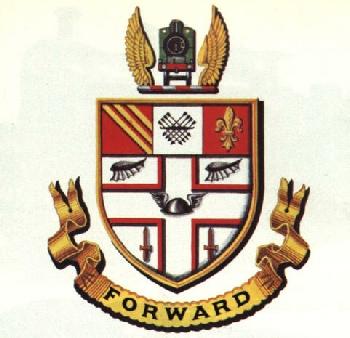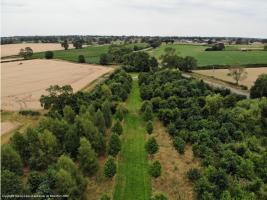Club Meeting - the birth and early years of the Great Central Rlwy.
Wed, Feb 7th 2024 at 6:00 pm - 7:30 pm
Speaker Malcolm Riddle

Speaker: Malcolm Riddle, The Great Central Railway (GCR), The Early Years
The Great Central Railway was the last main line to be built in Britain, opening in 1899 and closing in 1969, it carried both freight and passengers. The 8 mile heritage line between Leicester and Loughborough is the historical reminder/remains of this Victorian project.
The line was the brainchild of wealthy Edward Watkin, MP and entrepreneur, who was involved with engineering projects both in the UK and Canada - the Victorian Railway King. A railway line existed between Manchester and Lincolnshire carrying mainly coal across the Pennines. Edward Watkin’s vision was to connect this line to London with the aim of carrying fresh fish, coal and agricultural produce from the east to the south and into London and then on, via a tunnel under the Channel, to Europe. He planned to use an existing channel tunnel, abandoned in 1880. The idea was for the northern line - linking Manchester, Sheffield and Lincolnshire line (MSLR) - to connect to the London
Metropolitan Line; the MSLR ended north of Nottingham at Annesley. Watkin was seen as a visionary and supported other grand projects such as the building of an Eiffel Tower replica in Wembley Park. This particular project, after the bill was approved by parliament, began in 1896 but did not get past the first stage. It was called the Watkin Folly and closed down in 1902, being taken to the ground by planned explosion in 1907. This site is where the currently Wembley sits.
Once the southern extension of the MSLR was built there would be a 205 mile track from Manchester to London. However, it was seen as a potential disaster as there were already three other lines to the north. The application to build the line was submitted to parliament in 1891, showing a routing through Lords Cricket Ground. WG Grace and club members campaigned against the project. The campaign was successful and the bill failed. To overcome the objection Watkin planned a cut and cover tunnel under the ground which eventually won the day - the tunnels are still there to this day. Royal assent was given on 28th March 1893. 7 contracts were awarded for the various sections with a projected cost of £3 million (£5 million today) and a sum set aside for the tunnel work. Some things never change - the projected cost proved to be an underestimate with the final cost around £11 million! Compulsory purchase of land and property was not taken into consideration and the costs rocketed. The 92 mile extension line was opened by Countess of Wharncliffe four years later. 40000 navvys were employed in the building of the line - the last railway to be built by such a workforce. Malcolm showed photographs of the workforce amongst other images throughout his talk. This project was the first to use steam cranes.
The railway was named the London Extension of the Manchester, Sheffield and Lincolnshire Line - later to become the Great Central Railway. It was to be built to standard continental gauge with no curves, steep gradients or crossings. The line went through the East Midlands and Buckinghamshire farm lands. Entering Leicestershire by way of the Stamford Viaduct, there were 8 stations on the GCR through Leicestershire - Loughborough, Quorn and Woodhouse, Rothley and Birstall, Belgrave, Leicester Central, Whetstone, Ashby Magna and Lutterworth. The stations were of the island platform design - each station had one central platform accommodating both up and down-line trains thus allowing for future expansion and wider carriages.
Malcolm described the various stations showing photographs at differing stages; Loughborough had a long platform, Quorn and Woodhouse was popular with the Royals for the Quorn Hunt. Problems, during line construction were encountered with Swithland Reservoir. In 1896 the reservoir had to be emptied and then refilled for the line to be completed. Swithland Station was started and then stopped when Frederick Mertens purchased the Rothley Temple Estate - he wanted the station at Rothley. The Leicester section was a problem in that it needed a one and a half mile elevated viaduct through the heavily populated Blackfriars. 300 properties were demolished and the occupants re-housed in Daneshill in new housing. The elevation was 20 feet with 16 girder spans, incorporating a number of brick arches. Malcolm showed photographs of the clearing of the housing areas. Leicester Central Station was large and built on two levels as shown by a number of photographs of various sections including the main entrance. There was a north and a south platform, the length of two expresses, with a canopy over the top, gents toilets and terminator bays for local trains. The line had to cross over St Augustine St., the River Soar and the Grand Union Canal which was a challenge in itself. The Bow Bridge was the longest span on the route and there was great uproar when the bridge was demolished in 2009. Leicester also had a goods station to the south and locomotive and carriage depots. We saw photographs of Whetstone Station and learnt that Ashby Magna Station was quite isolated, serving the villages of Dunton Bassett, Cosby, Broughton Astley and Gilmorton. The Dunton Bassett Tunnel was the only tunnel in Leicestershire.
In 1898 the track was complete. The only trains running on it to begin with were mineral trains used to ‘settle’ the rails down. On 7th November 1898 the first passenger train ran, without passengers, as a test run, from Manchester to Marylebone Station. The grand opening was on 9th March 1899 when 3
trains ran from Leicester and Nottingham carrying guests to Marylebone in London. A 6 course lunch was served in the station concourse with 750 guests present.
The first scheduled passenger train ran on 15th March 1899 with four passengers, numbers rising to 34 by the end of the day. There were 5 daily trains starting at 5am with the last at 10pm going north. The first train from Leicester Central to London was at 5:10am with the first local train to Lutterworth at 8:30am. We saw various photographs of the trains and the, then, manual destination boards. Harry Pollitt, English railway engineer, was the engineer at the time of the first train service to run on the GCR Line; he was known for the Pollitt class locomotives, described as magnificent. John Robinson later became the GCR engineer, under Manager, Sam Fay. His locomotives were faster running, known as Pom Poms, by virtue of the noise they made. He was also known for another class of locomotive nicknamed Jersey Lilies, after Lily Langtry.
Edward Watkin died in 1901 so he did not see the fruit of his endeavours. His coffin was hauled by a locomotive to his funeral.
The main competition to the GCR was the Midlands Railway which ran the same route. Sam Fay was employed as the General Manager of GCR to improve revenue and profit. Journey times were reduced and high speed services introduced using faster, more luxurious trains (designed by John Robinson). A second route was introduced to bypass the Metropolitan Line with no other trains allowed on it. Incentives were introduced with luxury carriages and dining cars - the equivalent of Pullmans. The GCR was the first to serve A La Carte menus. The dining cars were well appointed and we saw interior photographs including that of the bar. Third class passengers also had dining facilities…… Advertisements promoting and incentivising train travel were developed e.g. sporting venues such as Leicester Fosse Football Club v. Arsenal, Chesterfield v. Notts Forest; historical places like Stratford on Avon and seaside resorts like Blackpool. Travel agents Dean and Dawson (in competition with Thomas Cook) also encouraged train travel.
Railway strikes became a feature e.g. 1911 (for one day) and 1919 (9 days). the 1919 strike resulted in government agreeing an 8 hour working day for rail staff, with increased pay. The Great War saw the railways coming under government control in 1914. The Railway Operating Division commissioned locomotives for Britain and Europe to carry military equipment and recruited soldiers to the ‘front’. Many thousands of GCR employees went to war and hundreds of women were employed to do the jobs of porters, guards and railway cleaners, for example; they were never allowed to drive the trains! Many of these women carried on working for the railway after the war. One locomotive was named the ‘Valour’ in memory of the thousands of railway staff never to return from war. Between 1914 and 1918 1.5 million tons of government freight was carried by the railway and the number of passengers had increased to 34 million by 1918.
After the war the railways were in a poor state due to lack of funding and maintenance. In 1920 123 railway companies were in financial trouble leading to the Railways Act of 1921, grouping the companies into four main ones. On 1st January 1923 the GCR became part of the London and North Eastern Railway (LNER). The name GCR was removed from any marketing and the livery colour changed - locomotives to a light green and carriages of varnished teak. Freight traffic increased but passenger numbers reduced dramatically. GCR contributed a lot to the World War 2 effort.
In 1948 all the railways were nationalised and LNER became part of the Eastern Region. In 1958 the ex-GCR passed to the Midlands Region and with it, the decline of it as a main line to London. On 3rd September 1966 the express route to London ceased and on 2nd May 1969 operations ceased.
We discussed Edward Watkin was probably the Richard Branson of his day. He improved the lot of the MSLR and the GCR but was always in competition with the London Midland Railway - the express service and pullman carriages attempting to tip the balance.
Jack thanked Malcolm on behalf of the Club for an interesting talk. We learnt a lot about 70 years of service that sadly came to an end. Even then costs overrun!
'What We Do' Main Pages:
Venue .Loughborough University.
more
Located on the A5199 Welford Road, between Foston Rd and Arnesby, The entrance location ///crew.broad.branch. SEE DETAILS BELOW...
more.jpg)
.The club continues to undertake a varied and active involvement with environmental projects - NEXT WORK PARTY DATE = 18th March 2024
more
.Club President Stuart accompanied by Rotarian LInda, visited Knighton Mead Academy on 3rd March, to present Young Writer Awards.
more




